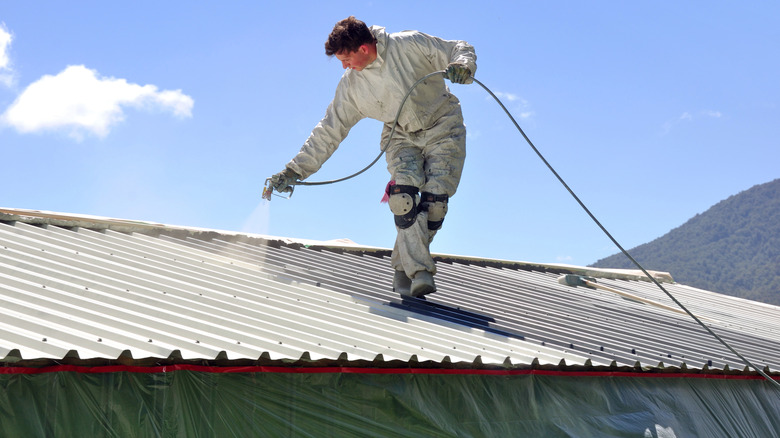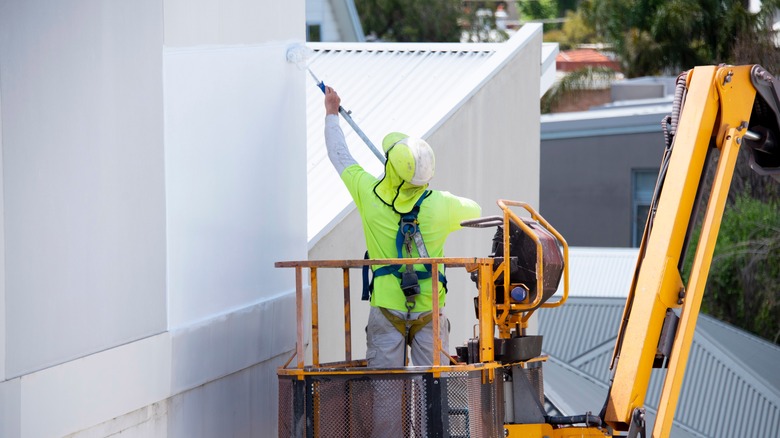The Futuristic White Paint That Could Cut Down Your Air Conditioning Bill
In the summertime, especially in the southeastern regions, homeowners' air conditioning bills are going through the roof. Therefore, any opportunity to lower those costs is welcome, and fortunately, scientists are working diligently to help. Along with a team of graduate students, Xiulin Ruan, Professor of Mechanical Engineering at Purdue University, has invented a bright white paint that, although still in its experimental phase, is destined to significantly lower costs by lowering a building's temperature.
Once it becomes commercially available, painting the exteriors of buildings with this reflective white paint will have a cooling effect so that less air conditioning is required. Speaking to Elizabeth Prann at The Hill, Professor Ruan said, "We can save the energy costs anywhere from 10% to 40% depending on the climate zone." The reason? This radiative white paint once applied to the roof can reduce the interior temperature by eight degrees. It even works when it's cold out. Working outside at 43 degrees Fahrenheit, Ruan's team's painted sample lowered by 18 degrees.
What's so special about this paint?
The paint has already made it into the Guinness World Records for the world's whitest paint. But as Professor Ruan and his team continue their research, their ultra-white paint continues to improve with each prototype they create. An earlier version contained calcium carbonate which was 95.5% reflective. However, 100 iterations later, their latest version contains a high concentration of barium sulfate, a white salt used in certain oil drilling applications, for x-ray images, fireworks, and paint pigments.
With the addition of barium sulfate, the paint is now 98.1% reflective. This reflects the sun's heat away from the building, resulting in a cooling effect, unlike other white paints, which become warmer. For instance, if you were to paint about 1,000 feet of a rooftop with this paint, it would result in the equivalent of ten kilowatts of cooling power. "That's more powerful than the air conditioners used by most houses," Ruan shared with Purdue University News.
In a second key improvement since this paint's invention in 2021, Ruan found a way to make the paint thinner. This is important because it can continue to reduce air conditioning needs in more commercial settings, for example, if it were used to paint planes, trains, cars, and potentially even spacecraft. That would significantly reduce energy costs on sophisticated electrical systems that need to be cool enough to function at their best. The scientists are in discussions about how to make this paint commercially viable.
Another crucial benefit of this paint's cooling power
Professor Ruan and his colleagues began with a two-pronged mission, both parts interrelated. One was to reduce energy costs, the other was to make a significant impact on climate change. Assuming that large-scale use of this paint could be implemented worldwide, the mass cooling of buildings could potentially contribute to cooling the earth's surface. This is extremely important and part of the Paris Climate Accord's goal to keep the rise in global warming below the 1.5 degree Celsius benchmark.
Keep your eye on the news coming out of Purdue's School of Mechanical Engineering in Indiana. It could take a few years before this paint is available to purchase. But it has an enormous amount of promise to reduce air conditioning costs. Professor Ruan has suggested that the barium sulfate paint will most likely be able to handle outdoor conditions and that it will be formulated so that it's compatible with the existing processes to make commercial paints.


